Introduction: Elevating Safety and Compliance Standards in the UAE
The United Arab Emirates (UAE) has consistently positioned itself at the forefront of regulatory excellence, particularly regarding occupational health and safety (OHS) across critical sectors. As part of this journey, the introduction and continuous refinement of safety audit and regulatory inspection regimes, notably under the framework of the Qualifications and Certifications Assurance Authority (QCAA), represent a paradigm shift in how organizations address risk, compliance, and best practices. Recent legal reforms, including Federal Decree-Law No. 33 of 2021 (regulating labor relations) and Cabinet Decision No. 33 of 2022 (Occupational Health and Safety Controls), have reinforced the importance of robust safety systems. Understanding the dynamics of QCAA safety audits and regulatory inspections is thus essential for executives, compliance officers, HR managers, and legal practitioners who seek to align operations with evolving UAE legal standards, particularly as we approach 2025. This advisory offers a comprehensive analysis of the current framework, practical implications, pivotal legal references, and actionable compliance strategies in response to the UAE’s ambitious regulatory agenda.
Table of Contents
- UAE Legal Framework Overview
- QCAA’s Role and Objectives
- Legal Foundations for Safety Audits
- Regulatory Inspections: Key Provisions and Processes
- Comparing Past and Present UAE Laws
- Risks of Non-Compliance: Legal and Business Consequences
- Implementing Best Practices: Compliance Strategies
- Case Studies and Hypothetical Scenarios
- Frequently Asked Questions
- Conclusion and Forward Perspective
UAE Legal Framework Overview
Key Legal Instruments Regulating Safety Audits and Inspections
The regulation of workplace safety in the UAE is articulated across several key legislative instruments. Chief among these are:
- Federal Decree-Law No. 33 of 2021: Focuses on the regulation of labor relations, articulating employer and employee obligations for a safe working environment.
- Cabinet Decision No. 33 of 2022: Supplements the Decree-Law by specifying occupational health and safety controls and the mechanisms for their enforcement.
- Ministerial Resolution No. 44 of 2022: Further develops procedures for the implementation of OHS standards, including reporting and rectification mandates.
- QCAA Directives 2023/2024: Establish quality assurance and certification requirements, specifying standards for internal and external safety audits in regulated entities.
Together, these instruments delineate a robust compliance matrix that is not only punitive where necessary – through sanctions and administrative penalties – but also supportive, emphasizing prevention, regular auditing, and continuous improvement.
QCAA’s Role and Objectives
Mandate and Supervisory Powers
The Qualifications and Certifications Assurance Authority (QCAA) operates as a semi-autonomous entity, reporting to relevant UAE ministries (notably the Ministry of Human Resources and Emiratisation). Its primary objectives include:
- Developing standardized safety audit frameworks and inspection checklists.
- Accrediting auditors and certifying inspection bodies.
- Coordinating periodic and ad hoc regulatory inspections with sector regulators.
- Issuing directives and advisory notes on emerging workplace risks.
Beyond the development of standards, the QCAA operates as an enforcer, empowered to:
- Mandate audits for high-risk sectors (e.g., construction, oil & gas, manufacturing).
- Recommend corrective actions and remedial training.
- Escalate persistent non-compliance cases to judicial authorities for prosecution under the Federal Legal Gazette provisions.
This centralized authority is a marked departure from earlier sector-based or ad hoc inspection models, helping to create a unified compliance baseline across the UAE.
Legal Foundations for Safety Audits
Key Provisions of Federal Decree-Law No. 33 of 2021 and Cabinet Decision No. 33 of 2022
Safety audits are codified in several key articles of UAE law:
- Article 13 (Decree-Law No. 33/2021): Obliges employers to ensure workplaces meet OHS standards as specified by competent authorities.
- Article 14: Provides for periodic workplace safety audits and internal monitoring, including the right of authorities to conduct external audits.
- Cabinet Decision No. 33/2022 (Articles 6–10): Mandates the development of documented safety management systems (SMS), annual risk reviews, and the maintenance of inspection and corrective action logs.
- Ministerial Resolution No. 44/2022: Details the requirements for audit scope, auditor qualifications, and post-audit reporting, particularly in high-risk sectors.
Official audit checklists are published by the QCAA and updated annually on the UAE Government Portal. These checklists are industry-specific and reflect both regulatory obligations and best practices. Legal practitioners are advised to regularly review updates, as non-compliance with the latest QCAA checklist may result in sanctions even if older compliance regimes were met.
Practical Consultancy Insights: Application in the Workplace
- Employers must schedule and document both internal audits and prepare for unannounced QCAA inspections.
- Audit findings require implementation of corrective actions within prescribed timelines (usually 30-60 days).
- Records retention (typically 5 years) is strictly enforced; inadequate documentation is itself a breach.
- Preparation for audits should include mock inspections, gap analyses, and management briefings to ensure company-wide readiness.
Regulatory Inspections: Key Provisions and Processes
The Inspection Regime: Powers and Procedures
QCAA inspections are conducted under express legal authority, with inspectors holding identification and appointment warrants issued by the Authority. The key legal instruments empower inspectors with broad rights to:
- Enter premises (with or without prior notice) during working hours.
- Obtain access to safety documentation, risk assessments, staff training records, and incident logs.
- Interrogate managerial and frontline staff regarding compliance with OHS standards.
- Impose on-the-spot remediation requirements or, where warranted, issue immediate stop-work orders.
Cabinet Decision No. 33/2022, Article 11 specifies that affected entities have a right to receive and comment on inspection reports before final enforcement decisions, providing due process and an opportunity for clarifications or challenges.
Inspection Triggers: Routine, Random, and Complaint-Driven
Inspections fall into three categories:
- Routine Inspections: Scheduled according to an annual risk matrix (sector, incident history, inspection cycle).
- Random Spot-Checks: Targeting companies based on QCAA data analytics, past audit outcomes, or sectoral risk alerts.
- Complaint-Driven Investigations: Prompted by whistleblower disclosures, employee complaints, or external reports of OHS violations.
Remediation, Escalation, and Appeal Rights
- Non-compliance findings trigger remedial deadlines, typically ranging from 7 to 90 days depending on severity.
- Serious or repeated breaches may result in business license suspension, referral to the Public Prosecution, or blacklisting under the Federal Legal Gazette Enforcement Schedules.
- Affected companies have a right of appeal to a designated QCAA review panel before penalties are finalized.
Comparing Past and Present UAE Laws
Evolution of Safety Audit and Inspection Laws
| Aspect | Earlier Regime (Pre-2021) | Current Regime (2021 Onwards) |
|---|---|---|
| Lead Authority | Sector-Specific Ministries (e.g., Health, Labour) | Centralized QCAA and Cabinet Coordination |
| Scope of Audits | Focused on High-risk Sectors Only | Comprehensive Across All Sectors |
| Audit Frequency | Irregular, Discretionary | Structured Annual Programs + Random Checks |
| Inspectorate Powers | Narrow, Often Delayed Implementation | Wide, Immediate Entry and Enforcement |
| Documentation | Basic Injury/Incident Logs Only | Full OHS Management System, Records, Training |
| Appeal and Due Process | Limited Opportunities | Structured Right to Respond, Appeal Panel |
| Penalties | Low Fines, Rare Suspensions | Substantial Fines, Suspension, Prosecution |
This shift to a more formalized, uniformly enforced OHS regime has raised compliance expectations and legal stakes for all UAE businesses.
Risks of Non-Compliance: Legal and Business Consequences
Penalties under the Federal Legal Gazette
Non-compliance with QCAA-mandated safety audit and inspection requirements exposes organizations to a range of sanctions, codified under Cabinet Decision No. 33/2022 and Ministerial Guidelines. Common penalties include:
- Administrative fines up to AED 500,000 for severe or repeated violations.
- Temporary or permanent suspension of commercial licenses.
- Mandatory retraining and re-audit orders (costs borne by the violator).
- Public disclosure of persistent violators on the UAE Government Portal blacklists.
- Civil and criminal liability for workplace accidents resulting from OHS breaches.
Reputational and Strategic Implications
- High-profile enforcement cases are frequently publicized, damaging corporate reputation and stakeholder confidence.
- Ineligibility for government contracts or sector licences in the event of blacklisting.
- Potential invalidation of insurance policies where breaches are proven (liability transfer risk).
Consultancy Guidance: Risk Assessment and Mitigation
Proactive legal counsel is essential for risks ranging from audit-prep gap analysis to emergency response protocols. Companies should engage in periodic legal reviews, update internal policies in line with QCAA guidelines, and ensure that external audits are conducted by approved and accredited bodies.
Implementing Best Practices: Compliance Strategies
Essential Steps to Achieve OHS Compliance in 2025
- Policy Refresh: Regularly update OHS policies in accordance with QCAA and Ministry of Human Resources circulars.
- Internal Audit Readiness: Schedule at least bi-annual internal audits, using the latest QCAA checklists.
- Staff Training: Document and mandate training sessions, particularly after legal updates or major incidents.
- Management Engagement: Ensure senior executives are directly involved in compliance oversight (legal liability increasingly falls on directors under new regime).
- Incident Response Planning: Establish and rehearse emergency procedures, ensuring rapid, documented response to regulatory inspections or workplace incidents.
- External Legal Review: Engage accredited legal consultants to review policies, documentation, and audit trails on at least an annual basis.
Compliance Checklist: QCAA Safety Audit Preparation
| Action | Timeline | Responsible |
|---|---|---|
| Review of Latest QCAA Directives | Quarterly | Compliance Officer |
| Update of OHS Policy Documents | Annually or as Required | HR/Legal |
| Staff Training and Refresher Courses | Semi-annual | HR/Training |
| Records Management/Audit Trails | Ongoing | All Departments |
| Emergency Preparedness Drill | Bi-annual | Facilities Manager |
| External Legal Compliance Audit | Annual | Accredited Law Firm |
Case Studies and Hypothetical Scenarios
Case Study 1: Construction Firm Exposed by Spot Audit
A leading UAE-based construction company was subject to a random QCAA inspection following several industry-wide incidents. Inspectors discovered outdated emergency evacuation plans and missing incident logs. Despite a generally robust OHS infrastructure, the documentation failures resulted in:
- An immediate fine of AED 75,000
- Mandatory review and update of all OHS documentation
- A follow-up inspection within 30 days to confirm remediation
Case Study 2: Manufacturing Plant Benefits from Proactive Legal Review
A major manufacturing plant engaged a legal consultancy to conduct a pre-audit review in advance of anticipated QCAA inspections. Deficiencies in staff training records and risk assessments were identified and quickly rectified. The official inspection resulted in a clean bill of compliance, allowing the company to maintain eligibility for major government contracts.
Hypothetical Example: Retail Chain and Remote Work Safety
With the post-pandemic surge in remote work, a retail chain sought guidance on extending OHS provisions beyond its physical premises. The legal team adapted the company’s SMS to include home-office ergonomics and digital safety audits, ensuring compliance with evolving Cabinet Decision 33/2022 expectations.
Frequently Asked Questions (FAQs)
How often are QCAA inspections conducted?
Routine inspections are conducted annually as per the QCAA sectoral risk matrix, but unannounced spot-checks or complaint-driven inspections can occur at any time.
What is the liability of directors for OHS breaches?
Under post-2021 regime, directors and senior management can face civil, and sometimes criminal, penalties if OHS lapses are attributable to their oversight or negligence.
How can businesses contest adverse QCAA findings?
There is a formal right of appeal to a QCAA review panel, and in cases of adverse administrative penalties, matters may proceed to judicial review per the Federal Legal Gazette.
Conclusion and Forward Perspective
The UAE’s drive for excellence in occupational health and safety, manifest in the ongoing evolution of safety audit and inspection laws, is reshaping legal and operational standards for all businesses. As QCAA’s centralized authority and enhanced enforcement provisions take hold, compliance is no longer a passive requirement but a strategic imperative. Moving forward, organizations are advised to invest in continual OHS monitoring, legal consultation, and culture-building to meet – and benefit from – the UAE’s progressive regulatory vision. Proactive adaptation now will position businesses to thrive in an increasingly scrutinized and safety-conscious environment, ensuring both legal compliance and long-term operational resilience.




